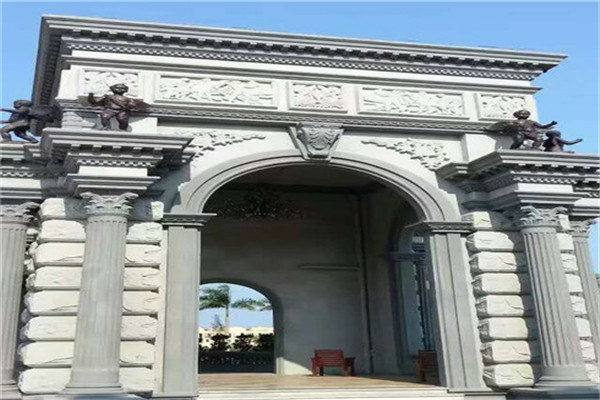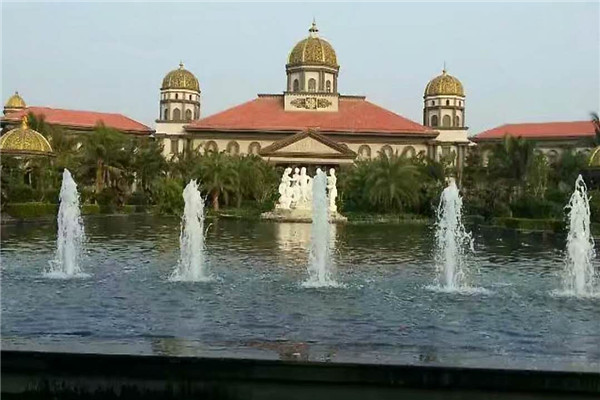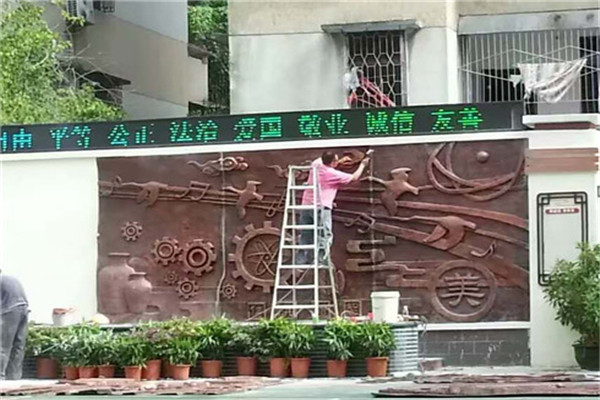
From the perspective of development, sculpture can be divided into traditional sculpture and modern sculpture. Traditional sculpture is a visual, tactile and static three-dimensional art form molded with traditional materials; Modern sculpture uses new materials to make anti traditional four-dimensional, five-dimensional, acousto-optic, soft and dynamic sculptures. According to traditional materials, and according to environment and function, it can be divided into urban sculpture, garden sculpture, indoor sculpture, outdoor sculpture, desk sculpture, shelf sculpture, etc. There are many kinds of sculpture materials, such as clay, stone, wood, metal, gypsum, resin, ivory, etc. Then several categories were developed: wood carvings: wood carvings have a long history. Most of the early themes were centered on religion. In addition to religious icons, they were also used for the decoration of altars and religious places. In countries where wood building flourishes, wood carving develops with architecture. Modern wood carvings have quite diversified styles and features, and artists like to use abstract forms to express them. In addition, wood carving is also an important contributor to the invention of printing. Please see woodcut prints for details; Stone carving: The regions where stone carving is developed have a lot to do with where the stones suitable for carving are produced. The regions where stone carving is developed have a long history of stone carving. In the past, stone carvings were often used as decorations of gardens, signs of doorways, or architectural decorations of mausoleums. Because the stone is thick (not easy to be stolen), and the details of carvings are not easy to be damaged by wind and rain, stone carvings are mostly in outdoor environments. The common stone carving material is marble. There are clay sculptures, ice sculptures, sand sculptures, metal sculptures and pottery.

In the history of human civilization, ancient artists have used many experienced forms, including architecture, gardens, sculpture, painting, literature and so on, to make these humanistic environment spaces convey more abundant ideological connotation and show a stronger artistic charm. The overall layout of these works is rigorous and thorough, and the scenes are grand. Various artistic means, such as architecture, gardens, music, painting, cultural relics display, film slides, torch lights, waterscape lights, are mobilized. Focusing on the common theme, each of these works gives play to its unique image language, forms a sequence space that unfolds layer by layer, and enhances rendering from visual and auditory perspectives, It influences the various senses of the viewer in an all-round way. The multi-level whole process, from sensibility to rationality, has fully expanded its breadth and constantly excavated its depth, which has led people deeply into a specific mood and mood, and then promoted them to a comprehensive and profound understanding of the event. At the same time, people have experienced a complete aesthetic process. The functional nature of the large-scale art complex with sculpture as the main body is mainly the commemorative enlightenment effect.

Exterior wall insulation decorative board is also called exterior wall insulation board, exterior wall board, metal curtain wall board, etc. It is a kind of exterior wall thermal insulation decorative wallboard made of high-quality galvanized sheet with color coating printing and thermal insulation materials. It is also a kind of new exterior wall external insulation board, which changes the disadvantages of single decoration color and no insulation layer in the past. The external thermal insulation system of thermal insulation decorative plate is a kind of external thermal insulation technology that has developed very rapidly in recent years. It has the advantages of factory prefabrication site quality control, cycle saving, and very beautiful curtain wall effect. Now, more and more public buildings and high-grade residential buildings are using the external thermal insulation technology of thermal insulation decorative panels. Various regions are also constantly issuing standards and guidance documents for the thermal insulation decorative board system, which is good news for the development of thermal insulation decorative board products.

Copper casting is an important part of Chinese traditional culture and art. Beijing GRC component processing Copper casting has a long history and mature technology. The process of casting copper is more complicated than that of forging copper, and the artistic creation has a good recovery. Therefore, it is suitable for becoming the material of fine works and is very popular with artists, especially figure sculpture. But it is easy to oxidize, so pay more attention to maintenance. Each cast copper artwork is made through 11 complex and rigorous processes, which have traces of traditional handicrafts, cost performance GRC component processing The lines also have the modern technology of precision casting. Cast copper is put into the sintering furnace and sintered at 1000 ℃ - 1150 ℃ according to different metal materials. The copper liquid is immediately cast into the ceramic shell. After cooling, the outer ceramic shell is broken, and the copper product rough embryo is peeled out.

It is a three-dimensional plastic art to use certain material materials to produce works of art with solid image. Because the production methods are mainly sculpture and molding, it is called sculpture. According to the production process, sculpture can be divided into two categories: sculpture and sculpture. Subdivision is divided into carving, carving, molding, chiseling, carving, casting and other skills and techniques. According to genre, sculpture can be divided into memorial sculpture, urban garden sculpture, sculpture, tomb sculpture and exhibition sculpture. According to the style, sculptures can also be divided into head portrait, bust portrait, bust portrait, full body portrait, group portrait, etc. According to the technique and form of expression, sculpture can be divided into three categories: round sculpture, relief sculpture and openwork sculpture. Round sculpture, also known as "muddy sculpture", is a three-dimensional sculpture that is not attached to any background and can be viewed from all sides. The round sculpture is characterized by a solid image standing in space. When creating it, one must take into account its sense of volume and weight. When shaping the image, one must also take into account that people watch it from different angles. Relief, also known as "relief", is to carve a convex artistic image on the plane. According to the different degrees of surface relief, relief can be divided into high relief (high and low relief, deep relief) and low relief (low and low relief, shallow relief). The openwork is between the round sculpture and the relief sculpture. On the basis of the relief sculpture, it is made by hollowing out the background, but it does not leave the plane, just like a round sculpture attached to the plane background.

Sculpture art is a kind of plastic arts, also called sculpture, which is the general name of three creation methods of sculpture, carving and sculpture. It refers to the art of using various plastic materials (such as gypsum, resin, clay, etc.) or hard materials (such as wood, stone, metal, jade, agate, etc.) that can be carved or carved to create a visual and touchable artistic image with a certain space to reflect social life and express artists' aesthetic feelings, emotions, and ideals. It is diverse, so the law of development has different ups and downs. For example, the bronze ware manufacturing and decorative carving in the Yin and Zhou Dynasties in China were unmatched by future generations. The themes of the Han Dynasty's stone reliefs fully reflect the real life at that time. The sculptures in the Tang and Song dynasties certainly exceeded those in the Han Dynasty, but the works of the Tang and Song dynasties never fully reflected the reality as the Han Dynasty stone reliefs did. The handicraft industry and commerce of the Ming Dynasty were improved compared with those of the Tang and Song Dynasties, but the sculptures of the Ming Dynasty rarely showed the characteristics of each work as fully as those of the Song Dynasty. Although the sculpture of the Ming Dynasty is not as good as that of the Tang and Song Dynasties, other artistic achievements of the previous dynasties are naturally behind.






